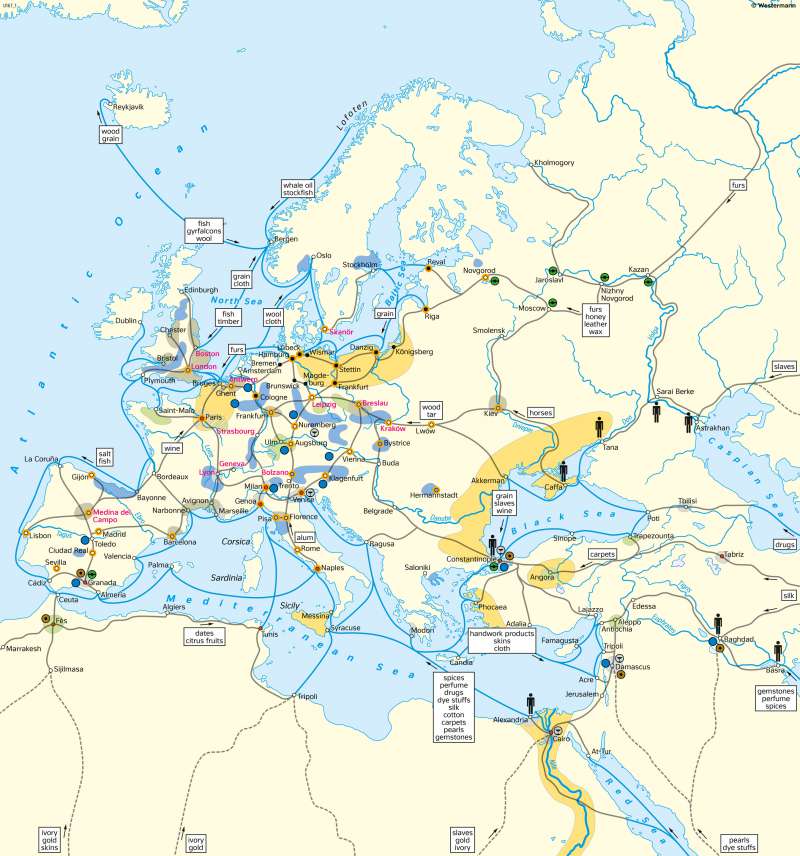Europe and the Orient - Trade and economy in the 15th century
Middle Ages
978-3-14-100890-6 | Page 59 | Ill. 3

Overview
The urban-rural contrasts in Europe have their origins in the economic development of the respective regions during the Middle Ages. In other words, trade and commerce had contributed to spatial differentiation within Europe during the Middle Ages. The map shows the economy and trade in Europe at the end of a medieval expansion phase.
Rural and urban areas
The rural area was predominantly purely agricultural in the 15th century. Its task was the production of foodstuffs such as grain and livestock as well as agricultural raw materials for trade (for example wool, leather, flax). Only some of the rural regions were integrated into large-scale trade, for example, through the export of grain. These were naturally favoured areas such as the Nile delta, Sicily, or even north-eastern Germany, where there was a demand for grain by the Hanseatic League. Peripheral areas such as Russia and northern Scandinavia mainly traded natural products (furs, leather, fish, honey, wax).
Most towns lived from trade, commerce, or mining. If they were not the seat of rulers, their development depended exclusively on the economy. In addition to the mining regions, which were mainly concentrated in the low mountain ranges, there were regions that specialised in the production of cloth and textiles (for example south-east England, Flanders, Brittany, southern France). Within the urban system, the large trading and fair centres had a special position.
The Hanseatic League
An important carrier of trade in the North and Baltic Sea region was, above all, the Hanseatic League. Founded in the 11th century as a cooperative association of German merchants, it developed into a Hanseatic League of cities over the following centuries. It quickly extended its influence in the Baltic region to Danzig, Königsberg, Riga, and Reval with the German colonisation of the East. As a cooperative confederation of cities, the Hanseatic League was clearly different from the Italian city republics, but its importance for trade was comparable.
Since the end of the 13th century, Lübeck was regarded as the lead in the Hanseatic League since the most important foreign trading posts of the alliance were in Bruges, London, Bergen, and Novgorod. Until the 15th century, at the league’s peak, the sphere of influence included more than 200 member cities, some of which were far inland (for example Münster, Cologne, Dortmund, Brunswick, Göttingen). The Hanseatic League united the countries around the North Sea and Baltic Sea with northern Central Europe to form a single economic area and thus gave decisive impetus to the development of production and trade. Through its economic power, it also had a politically significant influence in Central and Northern Europe at times.




